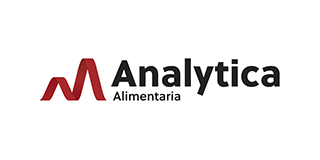

Analytica Alimentaria
Measurements
Cetrimonium chloride, pesticide or contaminant?
ANALYTICA ALIMENTARIA February 2021 Newsletter, produced in cooperation with Lach & Bruns Partnerschaft

In April 2020, the Chemical and Veterinary Investigation Office (CVUA) Stuttgart published test results from 2019 for residues and contaminants in fruit. In addition to the expected "typical" pesticide findings, a maximum level exceedance for the substance cetrimonium chloride was also reported in grapes from Brazil.
What is cetrimonium chloride?
From a chemical point of view, cetrimonium chloride belongs to the quaternary ammonium compounds family (QACs), just like benzalkonium chloride.
QACs have surface-active properties, which means that they can be used as biocides for disinfection purposes among other things.
Summary about cetrimonium chloride
- Cetrimonium chloride was detected by CVUA Stuttgart in a sample of grapes from Brazil.
- Cetrimonium chloride has surface-active and disinfectant effects and is used in a wide variety of areas, for example in cosmetics, as a biocide (disinfectant) and for finishing textiles.
- Use or approval as a pesticide active ingredient has not yet been reported in the literature.
- Nevertheless, the EU formally classifies cetrimonium chloride as a pesticide active ingredient.
- However, the applicable maximum residue limit of 0.01 mg/kg is not representative of the most likely routes of entry via different sources of contamination.
- A toxicological evaluation as a contaminant is appropriate.
- Cetrimonium chloride has a low toxicity.
- Analogous to the original assessment of benzalkonium chloride and DDAC when they appeared in 2012, the establishment of toxicologically derived reference values by the European Commission would be a good way to deal with cetrimonium chloride levels in food.
- In view of the high level of hygiene required as a result of the Corona pandemic, the occasional occurrence of residues from disinfectants must generally be expected.
ANALYTICA ALIMENTARIA February 2021 Newsletter also informs about the legal status of cetrimonium chloride as:
- Plant protection product
- Biocide
- Cosmetics
- Other applications.
Rating
As shown above, there are many uses for cetrimonium chloride. It is a "multiple source" substance, meaning that a positive result cannot be clearly attributed to a pesticide application.
In the case of detection in food, routes of entry such as biocide, cosmetic or other areas of application should be considered.
Due to the wide range of possible applications, the presence of centrimonium chloride on food via contamination seems much more likely than via application as a pesticide. Furthermore, we are currently unaware of any commercially available plant protection products containing cetrimonium chloride.
In our opinion, this is fundamentally different from active substances such as matrin, whose only known source of residues in fruits and vegetables to date is from use as a plant protection product. For such cases, the so-called "default value" of 0.01 mg/kg has been established in order to be able to regulate every plant protection product —regardless of its approval status in the EU— with a maximum control.
Considering this information, an evaluation of cetrimonium chloride as a pesticide-active substance with the default value (0.01 mg/kg) does not seem appropriate; rather, an evaluation as a contaminant would be more appropriate.
No maximum levels for cetrimonium chloride are regulated in contaminant legislation, in particular in the EU Maximum Contaminant Levels Regulation (EC) No. 1881/2006, such that a toxicological evaluation is required.
The newsletter follows explaining about the toxicological evaluation, recommendations for action, and analytics.












